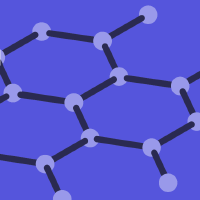Topic Menu
► Topic MenuTopic Editors


Electronic and Optical Properties of Nanostructures
Topic Information
Dear Colleagues,
The aim of this article collection is to contribute to the advancement of science and engineering and their impact on the industrial sector by uncovering their structure–application relationship. Nanostructured materials are characterized by their high surface area over volume ratio and their quantum effects. They can display significantly different electronic and optical properties from bulk materials. Due to their small size, nanostructured materials can pose as electronic structures based on their electron behavior, such as their confinement and quantum effect. This produces a new class of materials with various sizes, shapes, internal structures, and surface structures. These materials can change the energy of molecular orbitals (occupied high- and low-molecular orbitals), creating new energy orbitals and effecting a change in the band gap’s energy. The effect of defects is more impactful at this scale. Consequently, the change in the optical energy band gap directly influences the size-dependent optical property of nanostructured materials, as the optical band gap increases with a decrease in particle size, especially in semiconducting nanomaterials. The optical properties of nanostructures, such as light absorption, emission, transmission, and reflection, differ from those of bulk materials. New materials with optical properties can be produced and utilized in many applications by manipulating their size, shape, composition, defects, and surface functionality. For example, the color of the nanostructures can be modified based on particle size and shape. At the same time, the internal electronic structure can induce a new phenomenon, such as surface plasmon resonance (SPR), which occurs as a result of the resonance between the light wavelengths and the outer electron band of the nanostructured materials. Potential topics of this article collection include but are not limited to:
• The electronic properties of nanomaterials, such as conductivity and piezoelectricity;
• The optical properties of nanomaterials, such as linear absorption, photoluminescence emission, and nonlinear optical properties;
• The synthesis and characterization of nanomaterials and their optical and electronic properties;
• Modeling the optical and electronic properties of nanomaterials;
• Plasmonic materials;
• Photocatalysis;
• Catalysis;
• Coating;
• Sensors;
• Sensitive detection.
Prof. Dr. Khaled Saoud
Dr. Sami Rtimi
Dr. Fadwa El-Mellouhi
Topic Editors
Keywords
- optical properties of nanomaterials
- electronic properties of nanomaterials
- surface plasmon resonance (SPR) process
- modeling of optical and electronic properties of nanomaterials
- structure–property relationship
Participating Journals
| Journal Name | Impact Factor | CiteScore | Launched Year | First Decision (median) | APC |
|---|---|---|---|---|---|

Applied Nano
|
- | - | 2020 | 23.5 Days | CHF 1000 |

Applied Sciences
|
2.7 | 4.5 | 2011 | 16.9 Days | CHF 2400 |

Materials
|
3.4 | 5.2 | 2008 | 13.9 Days | CHF 2600 |

Nanomaterials
|
5.3 | 7.4 | 2010 | 13.6 Days | CHF 2900 |

Sensors
|
3.9 | 6.8 | 2001 | 17 Days | CHF 2600 |

MDPI Topics is cooperating with Preprints.org and has built a direct connection between MDPI journals and Preprints.org. Authors are encouraged to enjoy the benefits by posting a preprint at Preprints.org prior to publication:
- Immediately share your ideas ahead of publication and establish your research priority;
- Protect your idea from being stolen with this time-stamped preprint article;
- Enhance the exposure and impact of your research;
- Receive feedback from your peers in advance;
- Have it indexed in Web of Science (Preprint Citation Index), Google Scholar, Crossref, SHARE, PrePubMed, Scilit and Europe PMC.

